The pre-sale for “Sky-Cops and Peacekeepers” is now on! Please drop by www.chrisaphotography.com to get your order in.
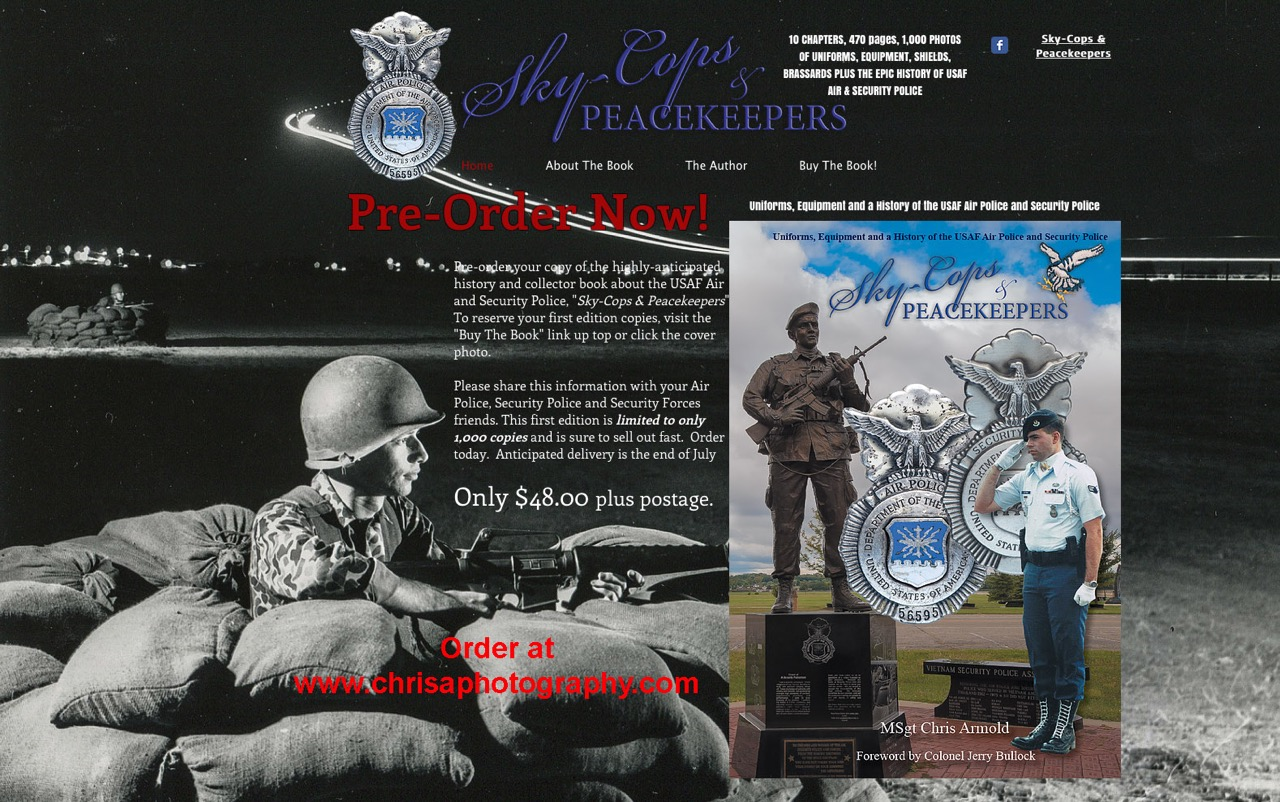
PRE-ORDER your copy of the epic Air Police Security Police visual history, "Sky-Cops and Peacekeepers" The first printing is limited to 1,000 copies and they are going fast! 50 copies have sold all ready. Visit www.chrisaphotography.com to get your pre-order in. Approximately 470 pages, approximately 1,000 photos, perfect bound, full color... .just awesome. Order today and e-mail and help me sell out! The book goes to print next week and anticipated shipping to you is the end of July. If you have questions, need help or see a glitch with the website please e-mail me at This email address is being protected from spambots. You need JavaScript enabled to view it. Buy two, three or four copies for your kids and grandkids! These will make amazing gifts for any cop in your life.
If you have questions or need additional information please contact me at This email address is being protected from spambots. You need JavaScript enabled to view it. or call me at 937-572-5581. Please share this with your friends, vets and active duty troops. It’s a great book with a fantastic visual story of our force!
Thanks for your interest
Chris Armold, MSgt, USAF (Ret)
AFSFA Member
Defender Dog Handlers .... great cause supporting current day USAF handlers!
Old Dawgs & Pups Needs YOUR Help!
SO THIS PATCH IS A FUNDRAISER!
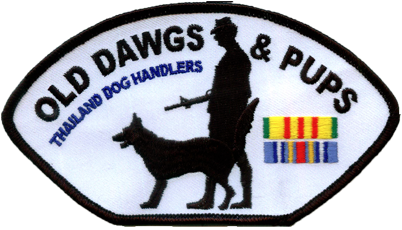
We’ve supported more than 500 Military Working Dog Teams since we started this program in 2005. We’ve had a lot of support from our major corporate sponsors, donations from VSPA and the VDHA, and individual donations from all of you.
However, right now we’re getting short on the funds we need to purchase and ship the supplies that our troops and their K-9 companions need and enjoy.
This NEW Old Dawgs & Pups patch can be yours for a donation of $15 per patch, and the funds we raise, as always, go directly to the MWD Teams in harms way in Southwest Asia.
The patch is 5.25 inches wide, and will fit on a cap, the shoulder or chest of a shirt or jacket, and it’s got heat-seal on the back so you can iron it on yourself. It also makes a great addition to a patch collection just pinned on a wall. Let’s see, do military folks and cops ever have patch collections? Do you know any military, cops or ex-cops? Well, there you go - that’s your gift list.
Just send a check or money order for $15 PER PATCH to Phil Carroll to order your patches. Your patch or patches will go in the mail to you right away. We are not set up to take credit card orders – Sorry!
1. Make check payable to: Phil Carroll
2. Send check to:
Phil Carroll
P.O. Box 8
Gladstone, OR 97027
All inquiries concerning purchase of these Old Dawgs & Pups coins must be directed to Phil Carroll at This email address is being protected from spambots. You need JavaScript enabled to view it.
U.S. Army and Air Force Agonize Over Picking a New Handgun
Popular Mechanics, By Kyle Mizokami, May 31, 2016
The Beretta M92 ranks at the bottom of all the firearms used by the U.S. Army and Air Force—but it'll take the Pentagon years to field a replacement.
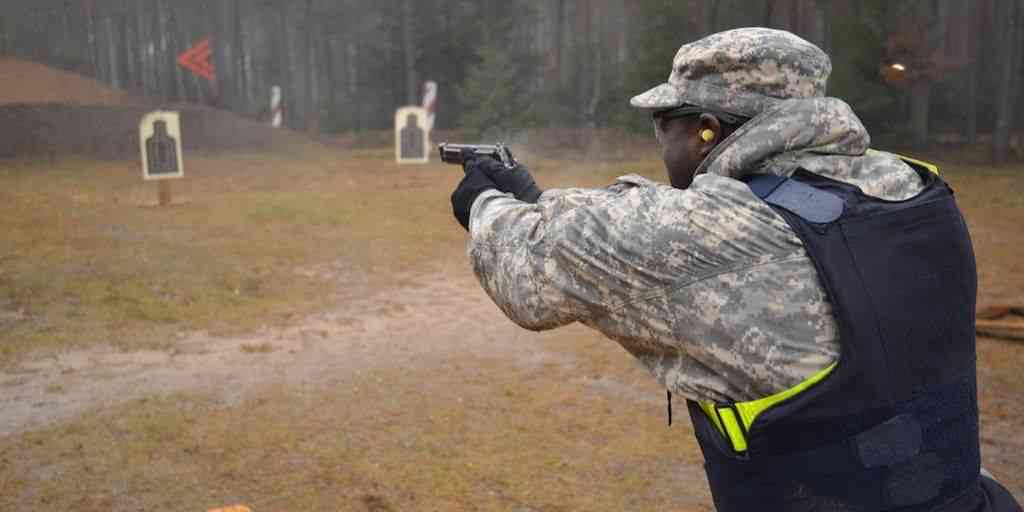
The Department of Defense will soon choose three finalists in a competition to be the U.S. Army and Air Force's new sidearm. One of the three finalists could go on to outfit all of the services, with total sales of of 500,000 handguns—but not before the Pentagon bureaucracy makes it as long and complicated as possible.
The Modular Handgun System (MHS) is a $17 million dollar effort to replace the aging Beretta M92 handgun. First adopted in the 1980s, the U.S. Army's Berettas are beginning to wear out. The M92 is also a product of another time, and hasn't kept up with recent advances in pistol technology.
The first requirement is that the new handgun surpass the M92 in accuracy, reliability, ergonomics, durability, and maintainability. In a 2006 report on U.S. infantry weapon reliability, the M92 scored at the bottom compared to the M4 carbine, M16 rifle, and M249 squad automatic weapon. In every category, from handling to accuracy to maintainability, the M92 came in dead last—or tied for last.
Twenty-six percent of soldiers polled reported their weapon jammed while shooting at the enemy. Forty-six percent reported they didn't have confidence in their pistol's reliability.

Glock 17
The MHS will also incorporate new advances in infantry small arms. The pistol will have a modular grip system, a recent development that involves interchangeable, different-sized grip panels to accommodate larger or smaller hands. This has become an important feature as the percentage of women in the military—who tend to have smaller hands—has jumped 50 percent since the 1980s when M92 was adopted.
The handgun will have an integral MIL-STD 1913 Picatinny Rail underneath the barrel, allowing the attachment of gadgets such as flashlights and lasers. It will also have a threaded barrel to accommodate a suppressor and should have low recoil.
Currently there are twelve bidders for the contract, including the Beretta APX, Ceská Zbrojovka's CZ P-09, FN Herstal's Five-Seven Mk 2, General Dynamics Ordnance and Tactical Systems (GDOTS) and Smith & Wesson's M&P polymer handgun; the Glock 17 and 22; and Sig Sauer's P320. An updated version of the M9, the Beretta M9A3, was rejected by the Army and won't be involved in the competition.
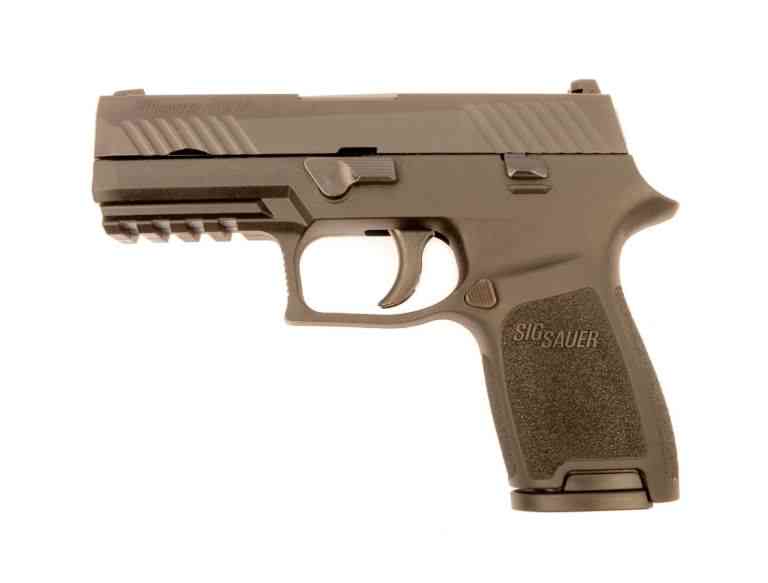
Sig Sauer P320
The pistol's caliber is still up in the air. Nine-millimeter and .40 Smith & Wesson appear to be the top contenders, with FN's 5.7-millimeter pistol also in the running, shooting a bullet that hadn't been invented when the M92 was first fielded. The venerable .45 ACP round, used for decades with the M1911A1 pistol, appears to have been disregarded due to the round's perceived heavy recoil.
The selection process—beset by the Pentagon bureaucracy—is progressing at a snail's pace. First begun in 2015, the MHS program will chose three semifinalists in August, with a nine-month evaluation process to follow. A winner will be picked afterward, with the winning entry to go into "low rate production." That means it will be at least another thirteen months before any pistols are delivered to the military.
The program's complexity has been stifling, prompting complaints from the Army's top general and Congress. The paper outlining the MHS's requirements runs a ridiculous 350 pages. Senator John McCain described the handgun selection process as "byzantine", and Army Chief of Staff General Mark Miley complained in March, "We're not figuring out the next lunar landing. This is a pistol. Two years to test? At $17 million?" Miley claimed he could walk into a Cabelas outdoors store with $17 million dollars and buy a handgun for every person in the military.

FN Herstal Five-seven
Miley may be exaggerating on how many pistols he could buy—even with a 20 percent bulk discount, $17 million would still only score you 40,000 Glock 17 pistols—but he's not wrong about the guns themselves. Practically every entrant for the Modular Handgun System is already on the lucrative civilian market in the United States, owned by thousands—in some cases, such as the Glock 17—by millions. The selection should be a fairly easy choice.
For most gun owners, buying a new handgun is a quick process that takes no more than a few hours scrutiny. For the Pentagon, it's a process that requires hundreds of pages of paperwork and years of hand-wringing before even finalists can be named.
DoD Plans Benefit Revision With ‘Blended Retirement’
By Karen Parrish DoD News, Defense Media Activity
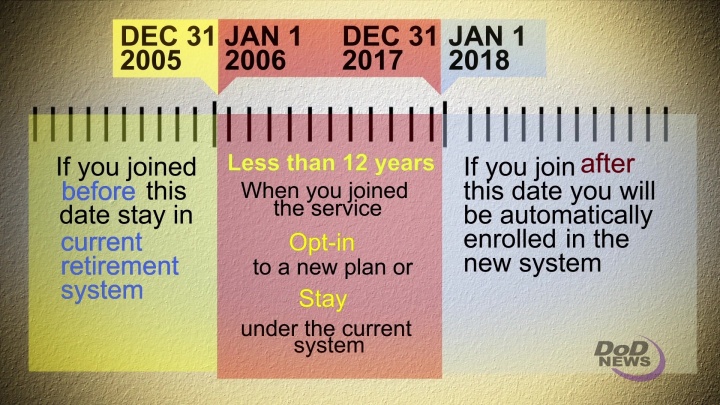
Changes to the military's retirement system could have a big impact on the way you invest in your future.
WASHINGTON, Feb. 12, 2016 — Upon taking office almost a year ago, Defense Secretary Ash Carter promised reforms, saying “that a blended retirement system is a key step in modernizing the department’s ability to recruit, retain and maintain the talent we require of our future force.”
An overhaul of the current military retirement system is slated to take effect January 1, 2018. The new system has three elements: a 401(k)-style component with Defense Department matching funds for entry-level and other service members, a mid-career continuity bonus, and a retirement annuity similar to the one now in place for service members that complete twenty or more years of eligible service.
DoD News spoke with Army Sgt. Maj. Mike Schultz while he was the senior enlisted advisor to the Assistant Secretary of Defense for Manpower and Reserve Affairs about the details of the new modernized retirement system.
One key point, Schultz said, is that many of those now serving will have the choice to opt into the new blended retirement plan.
Training the Force on Retirement Options
The first critical step in the change, he said, is educating senior leaders about the program’s provisions. Those leaders will then ensure training takes place at the “camps, posts and stations” where service members work.
Training tools now in the works will include online classes and benefits calculators for troops and their families, as well as classroom and distance learning, Schultz added.
He said the “deliberate approach to educate the force” will be a key effort from now until rollout.
Grandfathering and Opting In
The sergeant major said the question he hears most often about blended retirement is: “What will it mean to me?”
First, he said, all troops now serving are grandfathered and will be allowed to remain in the current system.
Those who have served in uniform for fewer than 12 years as of December 31, 2017, will have a choice to stay in the current system or to opt into the new retirement plan, Schultz said, and those who enter service after the blended retirement rolls out will automatically be covered by the new modernized retirement system.
Incentives, ‘Portability’ Built In
The phase-in will, Schultz noted, both keep faith with those who could retire under the current system, and offer new options for what he termed a “portable” retirement benefit plan to those who will serve in the future.
The aspects that make the plan “blended” are automatic and matching government contributions in the Thrift Savings Plan, similar to a 401(k) and transferable on leaving service, for service members in the new retirement plan, and retaining lifetime monthly retired pay for those who serve at least 20 years.
The government will automatically contribute 1 percent of a member’s basic pay into the member’s TSP account even if the member contributes nothing. After 24 months of service, the government will match member contributions, dollar-for-dollar, up to the first 3 percent the member contributes and fifty cents per dollar for the next 2 percent the member contributes.
Thus, if a member contributes 5 percent into the member’s TSP account, the government will contribute an additional 5 percent (1 percent automatic plus 4 percent matching), Schultz said. Members who serve at least 24 months and then separate will be able to keep the government contributions and transfer them to a new employer’s retirement plan. For service members that stay in the military for a full career of 20 years or more, the new plan continues to offer monthly retired pay similar to today’s system, although it will be computed based on a length-of-service factor of 2 percent per year, instead of the 2.5 percent per year used in the current system.
“A midcareer bonus is in addition to the TSP account and the 20-year annuity modeled on the current plan,” Schultz said. The DoD will pay a bonus of at least two and a half months’ basic pay (one-half month for reserve and National Guard members not serving in a full-time capacity) to those service members who have served 12 years and who agree to remain in uniform for four more years.
Stay tuned during the coming months as additional information and opportunities to learn more about the new blended retirement system become available.
Command: No Greater Honor
Official Web Site of Joint Base Andrews
Commentary by Colonel Victor Moncrieffe
11th Security Forces Group, Commander
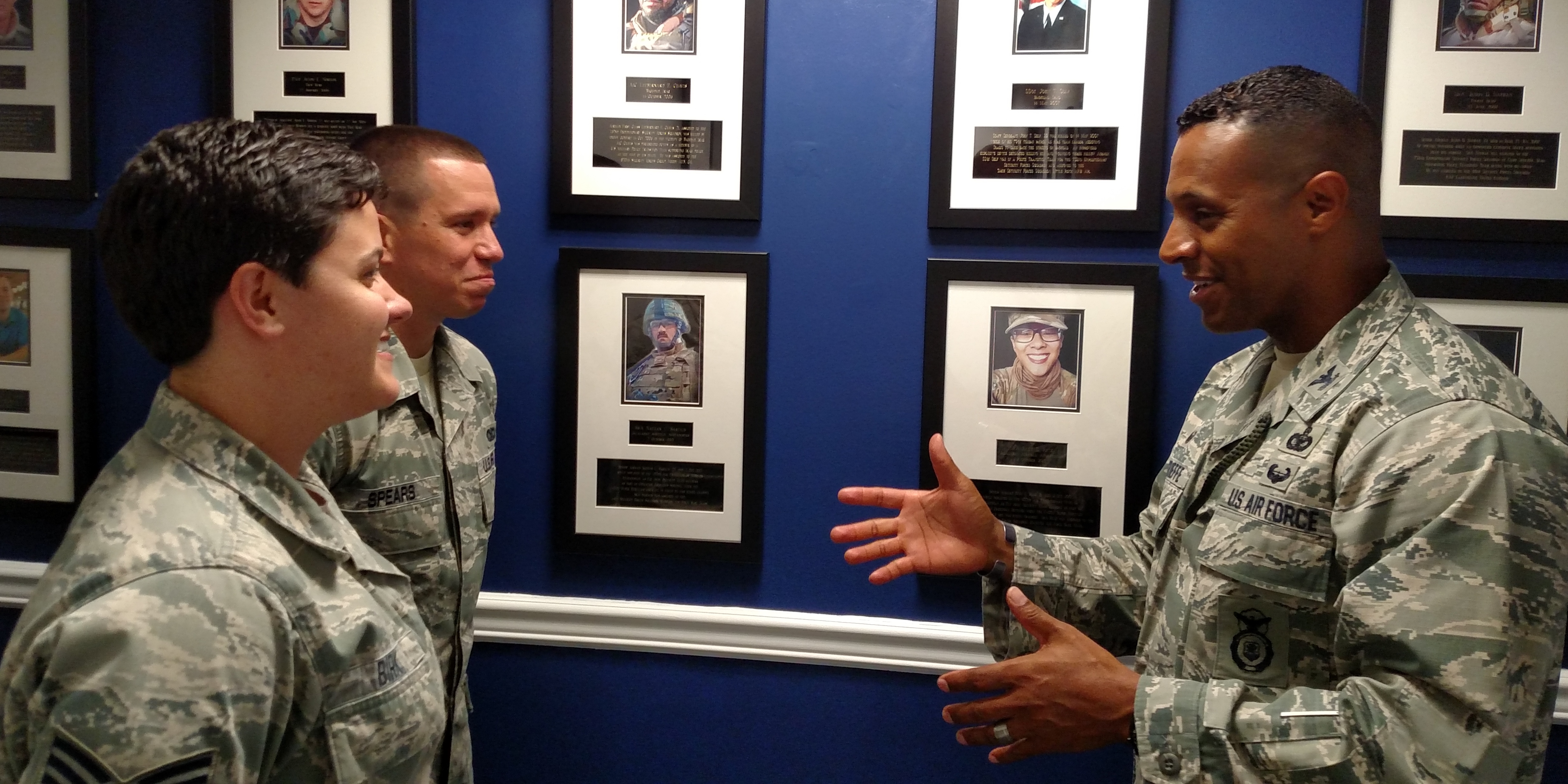
5/26/2016 - JOINT BASE ANDREWS, Md. -- Since commissioning I have desired to lead Airmen. I believe, commanding Airmen is the greatest honor any commissioned officer can achieve. The privilege and honor of being responsible for the successes and failures of American patriots serving something bigger than themselves, in the noblest occupation known to man, is unprecedented. That said, the mission of defending our nation is job number one. It is the primary reason we serve and develop the weapon systems we do, and by doing so, continue to uphold the principles which make our great country free. But as a leader, once you realize that your Airmen are the ultimate weapon system and that developing, caring and trusting the Airmen you serve equates to mission success, your focus becomes very clear. Take care of your Airmen and they will take care of the mission.
In my 22 years of donning the uniform of our country, the Airmen I have served never cease to amaze me. Regardless of the environment, lack of resources or the dangers associated with the mission, when asked, our Airmen will always perform to the best of their abilities. I know this because I have had the pleasure of seeing this first hand. As a lieutenant, on the plains of Montana, my Airmen did the ominous job of ensuring the deterrent was safe, secure and reliable in some of the most austere environments. As a major, I witnessed Airmen strive to make their dreams of becoming cadets at the U.S. Air Force Academy come true by enduring the academic and physical rigors associated with acceptance to this institution. In the deserts of Iraq, I thought of my Airmen daily as they left the safety of the installation responding to reports of improvised explosive devices and searched for weapons caches outside the wire. And, even here at America's Airfield as a full colonel, I've seen Airmen execute numerous National Special Security Events, an air show and other no-fail missions with precision and the utmost professionalism. Despite the many reasons and circumstances that bring people from diverse backgrounds into our Air Force, when our nation calls our Airmen will always answer.
As I conclude my leadership tour and contemplate that this may be the last time I hold the title of "commander", I am both grateful and humbled to a nation and an Air Force that granted me the wonderful opportunity on multiple occasions to lead Airmen. I can recall the promotions, awards, disappointments and both personal and professional accomplishments that my Airmen have attained and I am thankful just to have been a small part of their experience. As I think of my own successes I have had throughout my career, each one can be traced back to the hard work and sacrifices of those I led and served...the American Airmen. Even after more than 25 years of continued operations overseas and with constrained resources, our Airmen are making the impossible possible every day because failure is not in their creed. And as the torch of leadership is passed on from my generation to the next, I am encouraged by the fact that those officer and enlisted leaders coming after me will be more than prepared to take our Air Force to even greater heights because they care about their families, our nation, our Air Force, and fellow Airman.
So to you... future leader... commander..., know that there is no greater honor than leading Airmen. Use your rank and position to develop your Airmen, execute the mission and leave the institution better than you found it. Command is a sacred responsibility that our Air Force has entrusted to you that can never be taken lightly nor should it be squandered. Live up to your responsibilities as a leader, rely on your moral compass to stay grounded and stay true to our core values. If you do these three simple things your Airmen will fly, fight and ultimately... win!
Page 47 of 51


